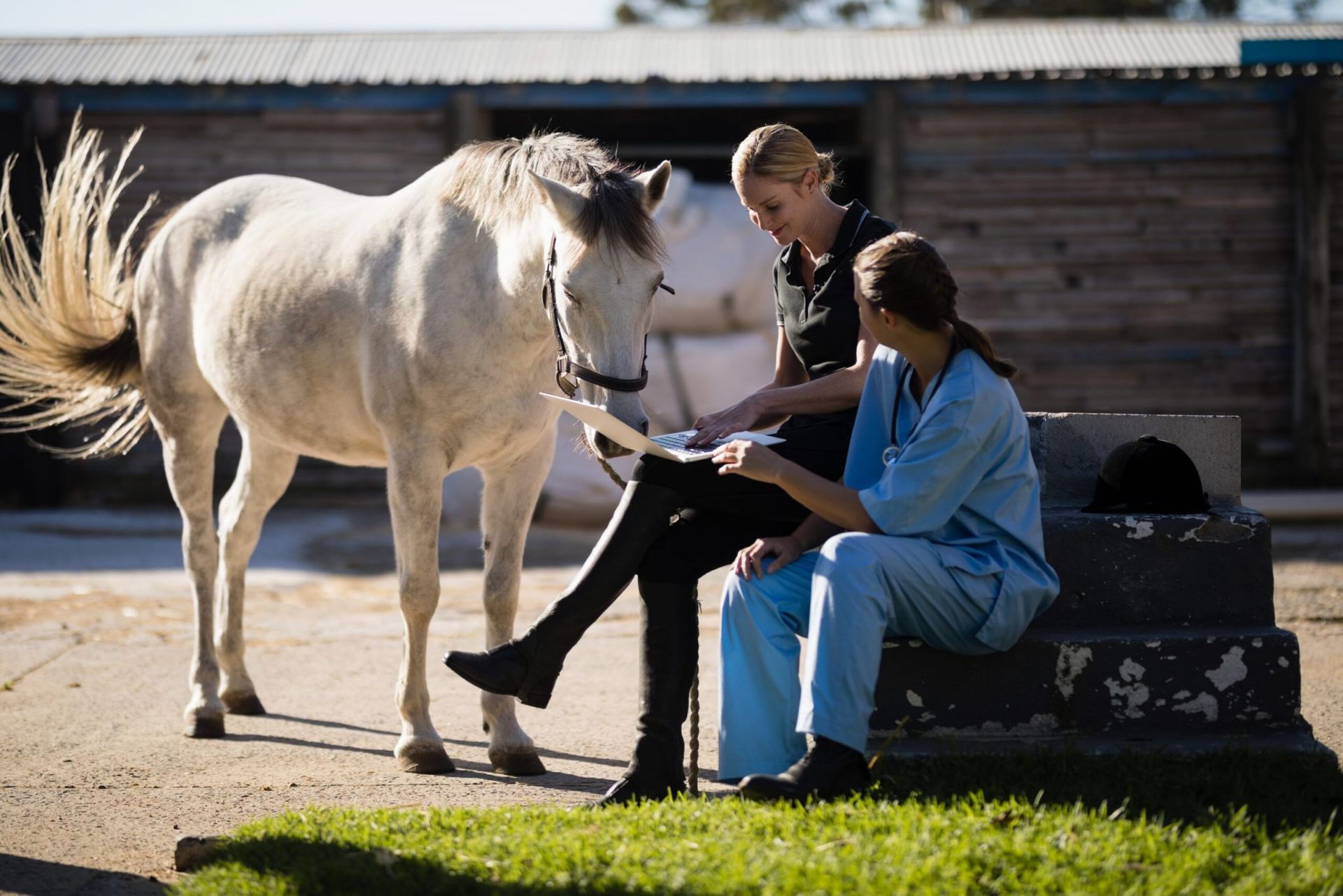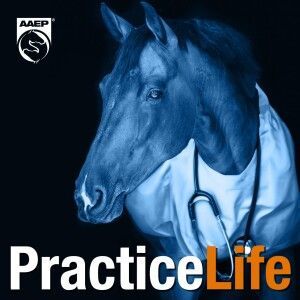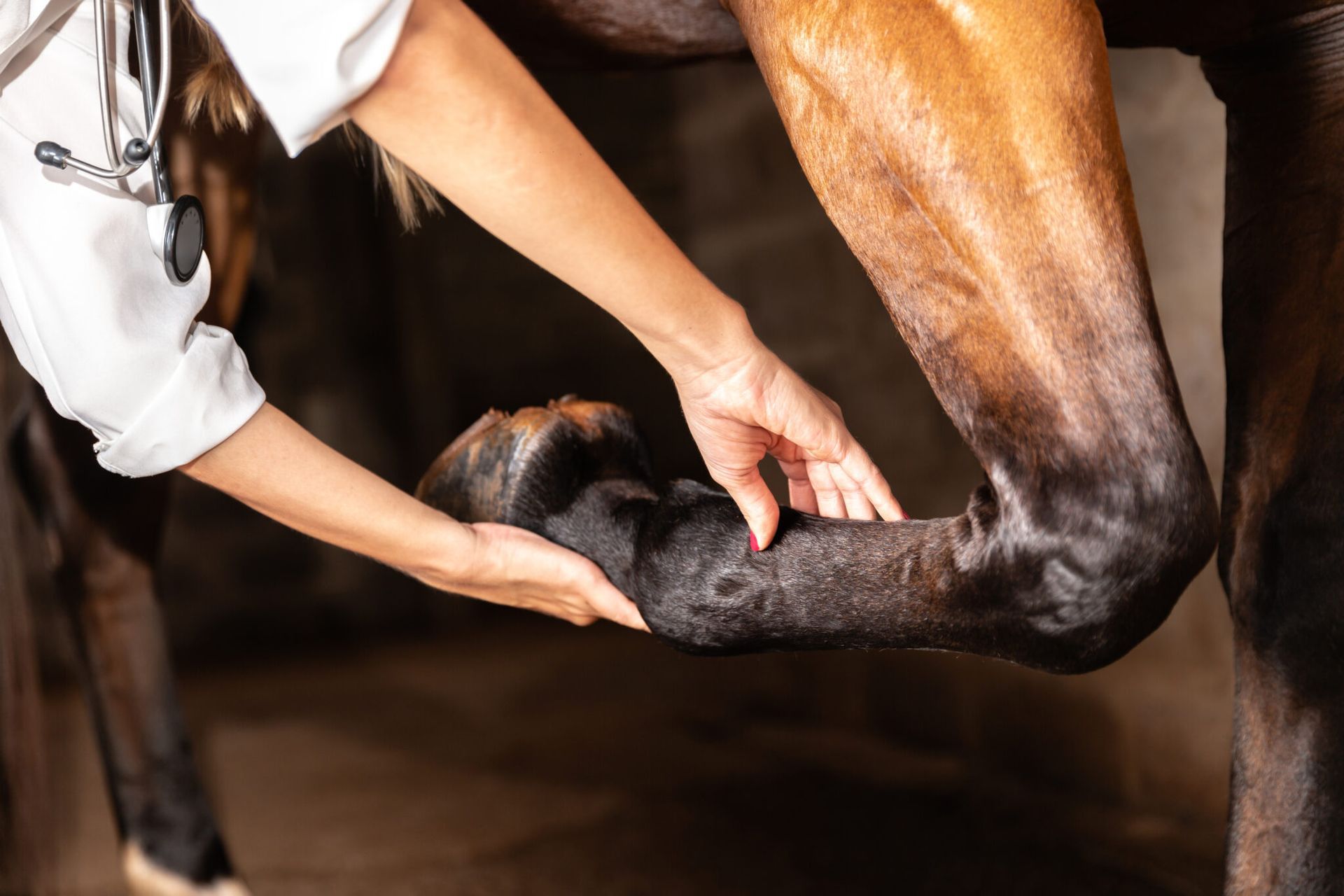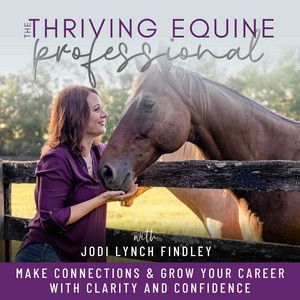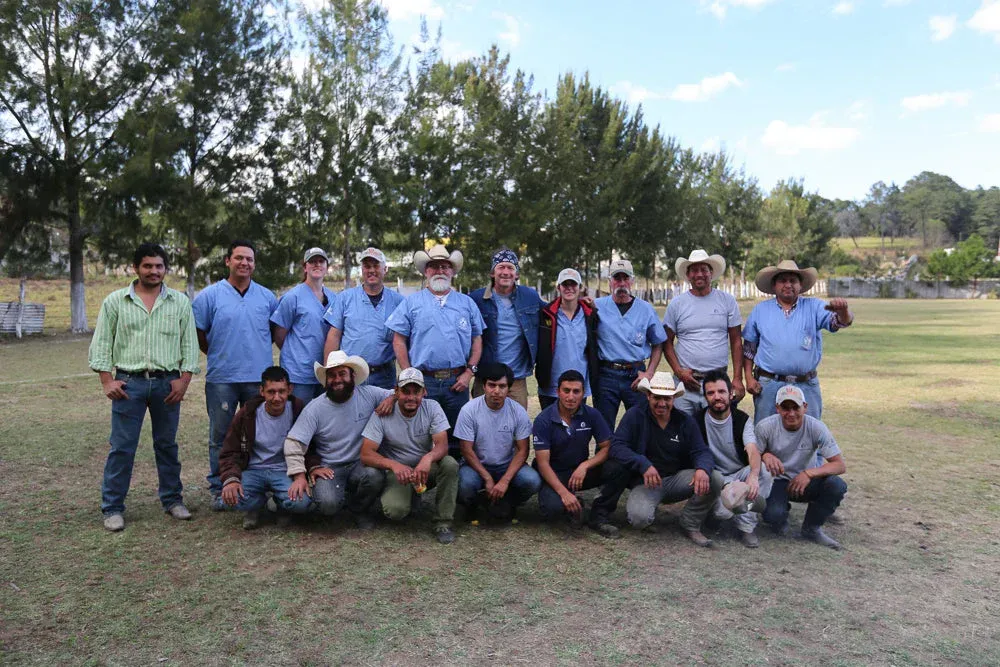The 2025 FullBucket Giving Trip
The cobblestone streets of Antigua, Guatemala whisper stories of colonial past, but today they're witnessing a different kind of history in the making. As the morning mist lifted over the UNESCO Heritage Site, our team of veterinarians, specialists, and students gathered for what marks our 25th service trip to the area - the 2025 Texas Equitarian Project. Thirteen years of dedication has led us to this moment, each return visit building upon the foundation laid by previous teams’ contributions.
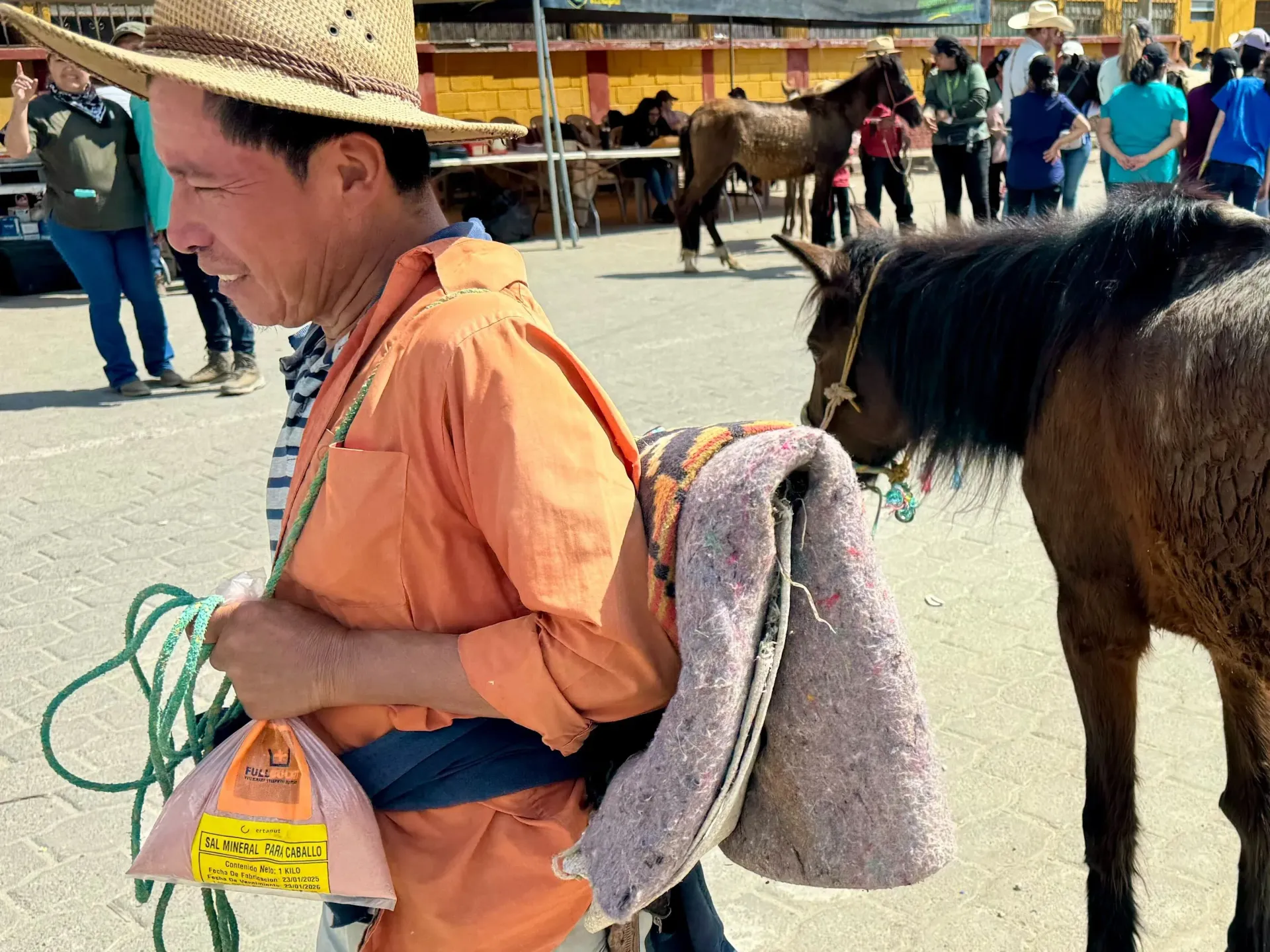
Day 1: Where Toyota Land Cruisers Can't Go: The 2025 Texas Equitarian Project Begins
In the shadow of ancient volcanoes, our first destination was San Andreas Itzapa, where more than 50 working equids – a mix of horses, donkeys, and mules – awaited our care. These aren't your typical show horses or beloved pets; they're the unsung heroes of Guatemala's mountainous regions, the four-legged engines of local economies and family sustenance.
"These animals are the Toyota Land Cruisers of the mountainous Third World," Dr. Rob Franklin explained as we set up our mobile clinic. It's a fitting analogy. Where modern vehicles can't navigate the steep terrain, these hardy animals persevere, carrying everything from firewood for cooking to children headed to school, from coffee beans to crucial supplies for entire communities.
Read the rest of Day 1
here.
Day 2: Mules, History, and Heroes - Tales from Alotenango
The road to Alotenango winds through Ciudad Vieja, where every cobblestone tells a story of Spanish conquistadors and the birth of colonial America. As our team traveled southwest from Antigua this morning, we couldn't help but feel the weight of history beneath our wheels. This very path we drove once witnessed the Spanish capital's multiple migrations – from Ciudad Vieja in 1527, forced by mudslides from Volcano de Agua to Antigua, where it remained for two centuries until earthquakes pushed it finally to present-day Guatemala City. The echoes of these historical shifts still resonate in the communities we serve, where resilience and adaptation remain crucial survival skills.
But today's story isn't about Spanish conquistadors – it's about a different kind of nobility altogether: the mighty mule. Alotenango revealed itself as unique among the communities we serve, with an unusually high population of these remarkable hybrid equids. There's a poetry to this that our team couldn't help but appreciate: in a landscape where practicality meets necessity, the mule represents nature's perfect compromise.
Read the rest of Day 2 here.
Days 3 & 4: Where Clouds Meet Healing - Stories from Chimaltenango's Heights
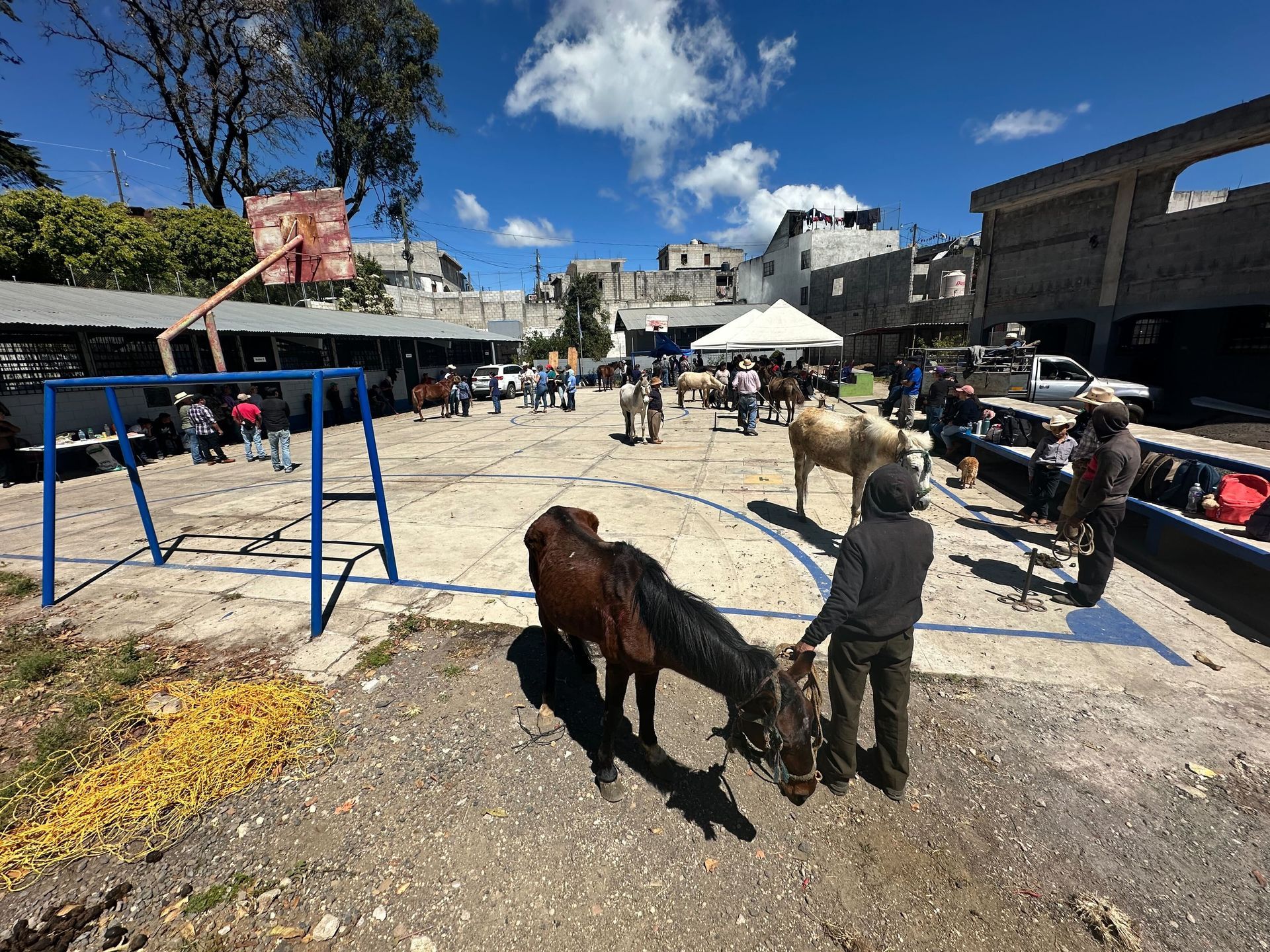
At 8,000 feet above sea level, where clouds embrace the mountainside and an ancient colonial church stands sentinel over endless vistas, our team found ourselves in Chimachoy on Day 3. Here, in this remote village we've come to know over multiple visits, the thin mountain air carries stories of both struggle and resilience.
The backdrop could have been lifted from a painting: our mobile veterinary unit enveloped in rolling mountain mist, the old church watching over a soccer field turned clinic, and an endless tapestry of milpas stretching toward the horizon. But the real artistry was in the work being done – careful hands teaching, healing, and learning amid the clouds.
Read the rest of Day 3 & 4 here.
Day 5: The Grand Finale With Group One
Our final day with Group One brought us to Soledad, a small village perched at 8,000 feet on the slopes of Acatenango, the region's highest volcano. Here, where the air thins and the earth tilts dramatically toward the sky, we found ourselves among farmers who daily navigate these steep inclines with their equine partners, cultivating the beans and corn that sustain their families.
The soccer field that served as our clinic offered a rare flat expanse in this vertical landscape. Against this backdrop, our team of veterinarians and farriers worked alongside thirty eager students from Guatemala City, their professors watching proudly as theory transformed into practice beneath the volcano's watchful gaze.
One case particularly illuminated the spectrum of care we provide – and the transformative power of gentle understanding. A young stallion, just two and a half years old, arrived for castration, but his body told a more complex story. Severe sarcoid, a non-lethal form of skin cancer, marked his groin area, complicating what should have been a routine procedure. Yet it wasn't the medical challenge that first caught our attention – it was the palpable tension between horse and owner.
Read the rest of Day 5 here.
Day 6: First Day With The New Team
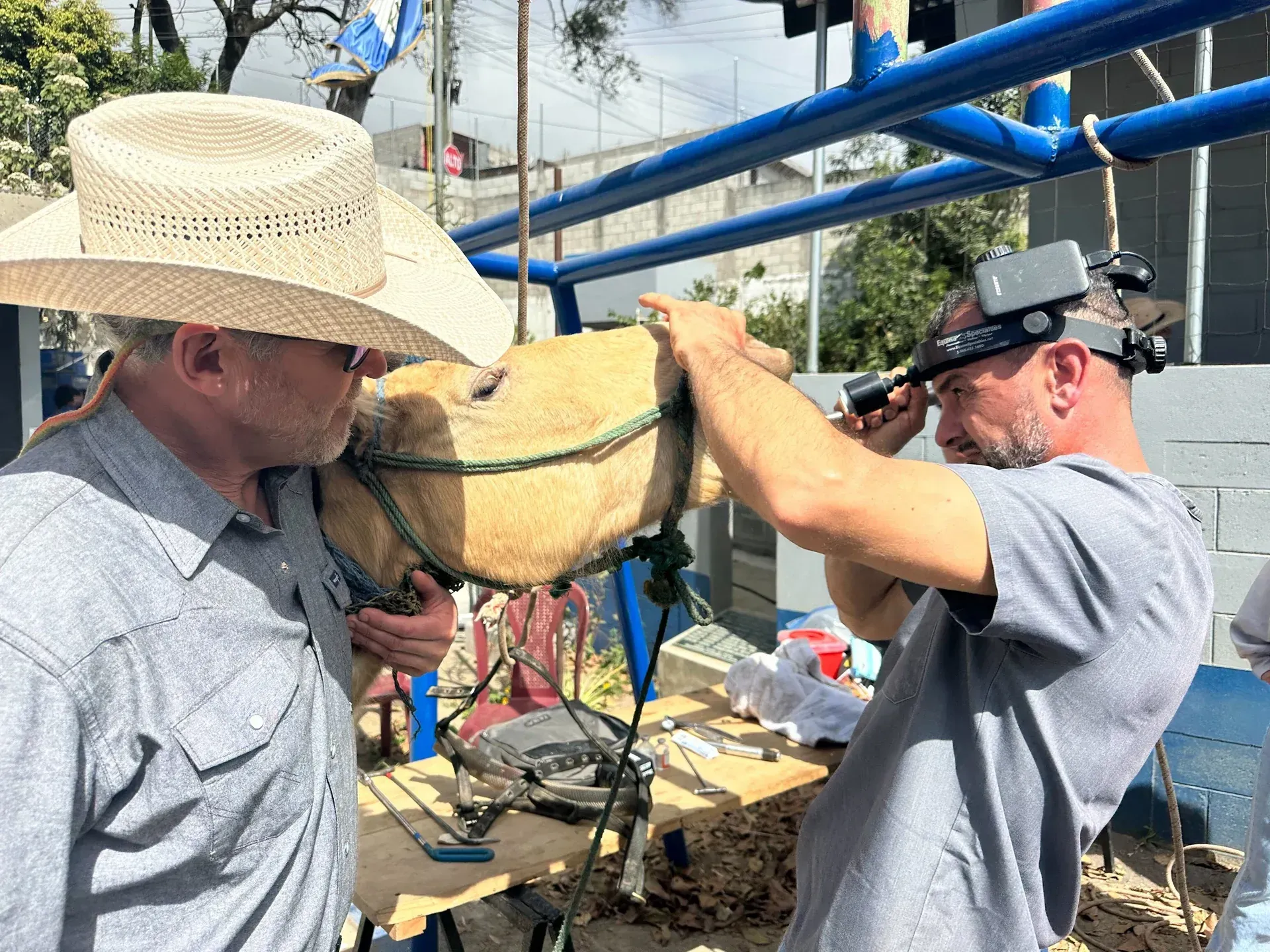
A new dawn broke over San Andreas Itzapa as our second team stepped into the rhythms of service established by Group One. This fresh ensemble brings together an impressive mix of expertise: from University of Georgia's dental specialist Dr. Rachel Green and equine technician Alec Green, to Houston's Pete Christianson with his endless supply of dad jokes and steady support. Dr. Matt Moskosky from Fredericksburg leads alongside Dr. Ciera Guardia, whose dedication to Guatemala's working equids spans back to 2016.
The team's diversity is its strength – Dr. Fernando Motto brings his "Jedi Master" skills and vital translation abilities, working alongside Anna, our cheerful vaccine preparer and record keeper, and AnaRosa, whose eleven years of veterinary service experience proves invaluable in bridging language barriers. Dr. Jessica Dunbar arrives from Colorado with her passion for dentistry, while Dr. Ashley Whitehead from Calgary stands ready with her EKG and wealth of teaching experience. Scott Giebler and Christina Lawton from Antech/Sound, Nyla, a fourth-year veterinary student from Oklahoma State, and the legendary Concho with his unique blend of horsemanship, veterinary, and farrier skills round out this remarkable group.
Read the rest of Day 6 here.
Day 7: The Original Capital
A new chapter unfolded in Ciudad Vieja, Guatemala's original capital from the 1520s before flooding forced its relocation to Antigua. Our team found itself working in this historic setting for the first time, surrounded by centuries of history and the echoes of colonial governance.
Against the backdrop of the old city's beautiful church and historic architecture, we treated 43 horses throughout the day. The pace was steady and manageable, allowing us quality time with the veterinary students to focus on teaching and hands-on learning. Our work included 28 dental procedures and 20 farrier visits, along with addressing various other needs of these hardworking animals.
A few cases stood out among the routine work. We encountered a horse with two suspected sarcoids, for which we provided Xtera treatment. Several horses presented with concerning saddle sores, each requiring careful attention and packing. One particularly memorable patient was a mule with an apparent old hock injury that had left it with a noticeable lameness.
Read the rest of Day 7 here.
Day 8: Rewarding Experiences in Santa Maria de Jesus
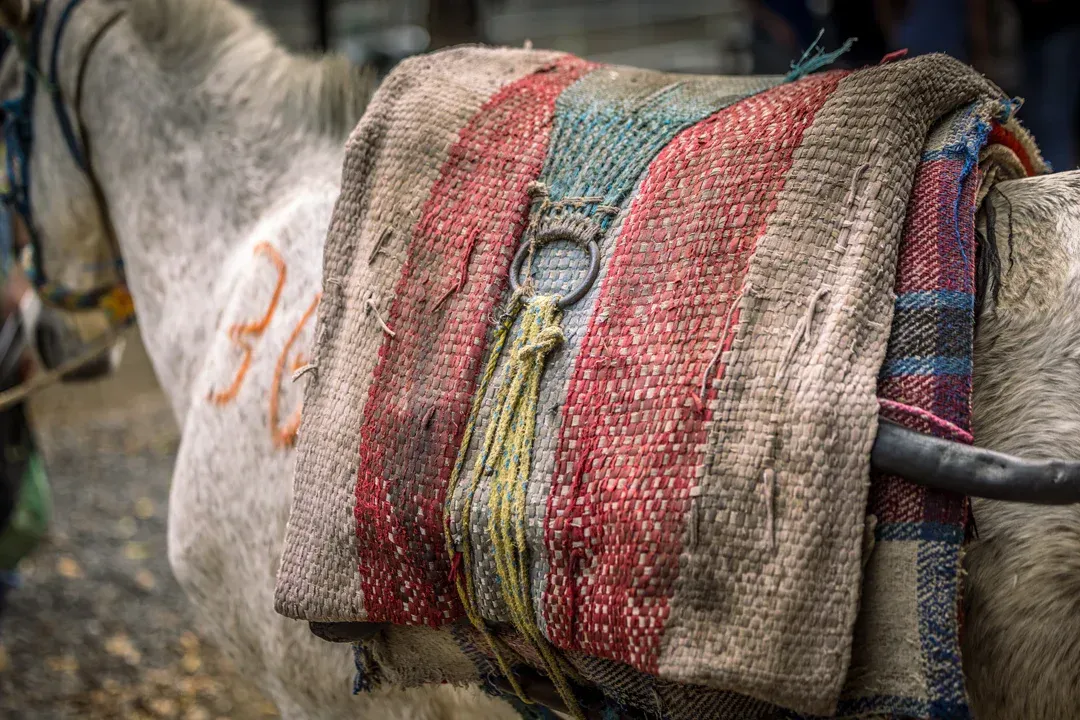
A return visit to Santa Maria de Jesus offered a rare and rewarding opportunity in our ongoing mission. While we saw fewer horses than Group One's visit last week, treating 43 equids including 27 dental procedures and 27 hoof treatments, it was the chance to follow up on previous cases that made this day special.
Two horses that had been treated for lameness during last week's clinic returned with their owners, and we were delighted to see noticeable improvement in both cases. This opportunity for follow-up care is uncommon in our work, making it particularly valuable – not only for the horses' continued treatment but also in demonstrating to the community the positive impact of proper veterinary care. We provided additional treatment to build on their progress.
The day's other cases followed familiar patterns – more saddle sores and pack sores that needed attention, reflecting the demanding nature of these animals' daily work. The slower pace of patients allowed us to dedicate quality time to teaching, giving the veterinary students comprehensive hands-on experience with each case.
Read the rest of Day 8 here.
Day 9: Our Busiest Day Yet
The day dawned at Sampango, a treasured location nestled in the mountains with stunning views of Volcano Agua. This annual visit proved especially productive as we treated 101 horses – our busiest day yet. What struck us immediately was the notably improved condition of the horses here compared to other areas, a consistent observation over years of visits to this community.
Among the day's many cases, two particularly challenged us both medically and emotionally. A yearling filly arrived with an old cervical fracture and hock injury that had healed improperly, leaving her neck permanently flexed to the right. Despite these severe injuries, she showed remarkably few neurological symptoms beyond slight hypermetria in her front legs. The case touched our hearts not only because of the filly's condition but because of her young caretakers – a 12-year-old girl and her brother who had nursed her through the initial trauma. While we provided pain medication, the long-term prognosis remained poor for this young filly, constantly grinding her teeth as an indication of the chronic pain. This case highlighted the delicate balance we must strike between Western veterinary practices and local cultural perspectives regarding end-of-life care.
Read the rest of Day 9 here.
Day 10: Ancient Traditions & Ageless Companions - Our Final Day in Santiago Sacatepequez
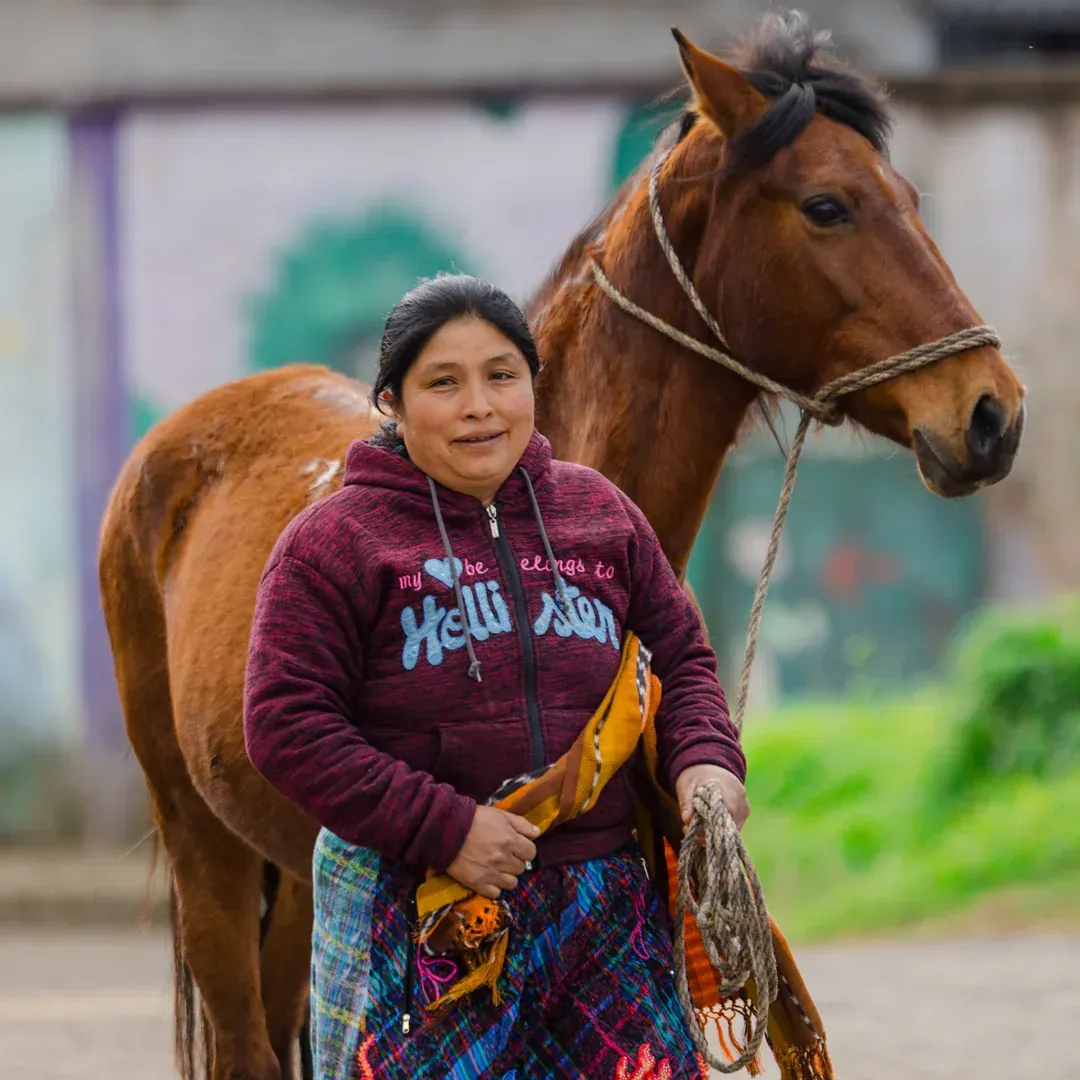
Our final day brought us to Santiago Sacatepequez, where we worked in tight quarters adjacent to a cemetery and amid ongoing construction. Despite the space constraints, safety remained our priority as we provided care to over 90 horses – a fitting conclusion to our two-week mission.
The day presented its share of medical challenges: a case of fistulous withers, the familiar saddle and pack sores, and several chronic hoof conditions exacerbated by lack of care. Our farrier team worked wonders with these longstanding problems, bringing significant relief to horses that had suffered for too long.
What made this location special was its cultural significance. Working on a concrete pad next to the cemetery, we learned this was the site of the annual kite festival held every November 1st as part of Day of the Dead celebrations. These magnificent kites serve as symbolic connections between the living and their ancestors – a beautiful reminder of how deeply tradition runs in these communities.
Read the rest of Day 10 here.

